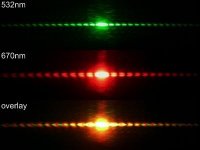My mistake :-(
I realise that it must just have been a language misunderstanding. 😎
My mistake was not making it clear that I was referring to art and not astronomy!
Kenny Rogers And The First Edition.What about The 5th Dimension?
Ron
Billy
Marilyn
Florence
and Lamonte
That's all I got.
and what about the Stooges? the sheer Dirac-ish beauty would insist that there's more than four:
Iggy
Ron
Scott
Dave
James
Larry
Curly
Moe
Shemp
Joe, and
the other Joe
Iggy
Ron
Scott
Dave
James
Larry
Curly
Moe
Shemp
Joe, and
the other Joe
Kenny Rogers And The First Edition.
That's all I got.
So, too busy to name all five of them? 🤩
Attachments
You're right, they do deserve respect:So, too busy to name all five of them? 🤩
Mickey Jones
Mike Settle
Terry Williams
Thelma Camacho
and of course Kenny Rogers
to name a few.
The tune I remember by them is Ruby, Don't Take Your Love To Town. It was a great hit.
Yes, that was good, Galu. Made the point that a straight edge produces a diffraction spike at right angles.
And that the spikes depend on the shape of the aperture and any criss-crossing lines. This is calculated using something called the spatial fourier transform.
Eric Korpela explains it in detail:
https://www.quora.com/What-will-the...d-by-the-James-Webb-Space-Telescope-look-like
So the horizontal line in the image is produced by the top or vertical supporting strut of the JWST. The other two, surprisingly, overlap the hexagonal diffraction spikes.

This could have been avoided by the layout below.

I suppose that would have been harder to pack into a rocket.
And that the spikes depend on the shape of the aperture and any criss-crossing lines. This is calculated using something called the spatial fourier transform.
Eric Korpela explains it in detail:
https://www.quora.com/What-will-the...d-by-the-James-Webb-Space-Telescope-look-like
So the horizontal line in the image is produced by the top or vertical supporting strut of the JWST. The other two, surprisingly, overlap the hexagonal diffraction spikes.
This could have been avoided by the layout below.
I suppose that would have been harder to pack into a rocket.
https://www.bbc.co.uk/news/science-environment-60708711
Someone at the BBC was having a larf with the headline...
Someone at the BBC was having a larf with the headline...
Having or not having "hair" means whether information can or cannot escape from a black hole.
Now, it seems that "quantum hair" may be a mechanism by which information can escape.
Now, it seems that "quantum hair" may be a mechanism by which information can escape.
So why can't we get images like that close up of our Sun? It appears as if all we see is diffraction. That short furry appearance is also diffraction, no? There is no sharp focus on the body of that star.Returning to the more recent topic of why stars are star-shaped, here's a fun video:
In photo terms that shot is blown meaning that the AC converter has produced all 1s. A star is a bright light source 😊
//
//
I just need to look through the net curtains on my kitchen window to see the diffraction patterns around the distant street lamps.
The more distant lamps give the Hubble type spikes, while a closer lamp gives a striking horizontal interference pattern.
The more distant lamps give the Hubble type spikes, while a closer lamp gives a striking horizontal interference pattern.
Evidently the threads of the net curtain form a geometric pattern, 🙂
Diffraction spikes are only a problem with bright objects, where the central star saturates the optics and you see thespikes.
James Webb is apparently reaching the limit of resolution known as diffraction limited. Exceeding lens imperfections.
Larger circular apertures give tighter resolution than small ones, as in this camera example:

Mathematically it is a Circular Sinc function or Airy Disk:

This is related to the regular Sinc function which Fourier transforms to a square impulse or rectangular function. It even works with digital audio filters, but looks different with analogue filters which impart time delay to the impulse:

The Gaussian function that has a Fourier transform that is also a Gaussian. This avoids fringes. Lasers work like this.

Fascinating stuff. It's how it works.
Diffraction spikes are only a problem with bright objects, where the central star saturates the optics and you see thespikes.
James Webb is apparently reaching the limit of resolution known as diffraction limited. Exceeding lens imperfections.
Larger circular apertures give tighter resolution than small ones, as in this camera example:
Mathematically it is a Circular Sinc function or Airy Disk:
This is related to the regular Sinc function which Fourier transforms to a square impulse or rectangular function. It even works with digital audio filters, but looks different with analogue filters which impart time delay to the impulse:
The Gaussian function that has a Fourier transform that is also a Gaussian. This avoids fringes. Lasers work like this.
Fascinating stuff. It's how it works.
I'm a bit surprised we don't have the tech to compensate/eliminate the diffraction digitally, revealing the real object. Forensics has technology to unscramble severely altered images in order to identify criminals deliberately obscuring their photos online.
...while a closer lamp gives a striking horizontal interference pattern.
Actually, the closer light source is a yellow, sodium-vapour street lamp.
The fact that the light it emits is nearly monochromatic explains the formation of the distinct interference pattern.
It looks similar to the middle image in the attachment.
Attachments
I'm a bit surprised we don't have the tech to compensate/eliminate the diffraction digitally, revealing the real object.
Diffraction limits resolution, no matter how good the system is.
If two points on the object are closer to each other on the camera sensor than the pixel pitch, they will blend together no matter how small the pixel pitch is.
The finer detail of the object you would like to see, Pete, simply can not be resolved.
In photo terms that shot is blown meaning that the AC converter has produced all 1s. A star is a bright light source
Pete, TNT has already pointed out one limiting factor to seeing any detail in that star, and I have pointed out the other.
The star in the JWST image is just too bright and just too small.
Larger galaxies will image better.
- Status
- Not open for further replies.
- Home
- Member Areas
- The Lounge
- What is the Universe expanding into..

